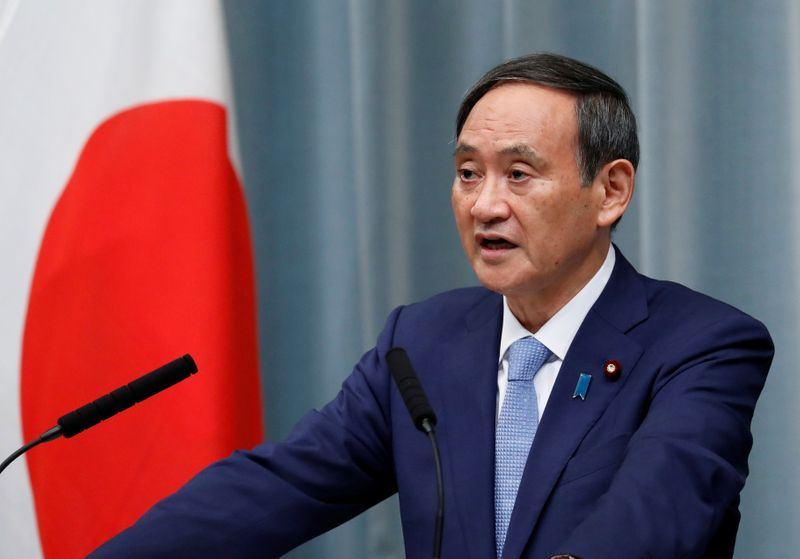Japanese Prime Minister Yoshihide Suga on Monday said that COVID-19 cases are surging in two western prefectures, including Osaka, but the situation does not mean the country is entering the fourth wave of infections, Trend reports citing Xinhua.
The Japanese leader's comments, made during an upper house Audit Committee session, however, did include for extra vigilance to be paid nationwide, local media reported.
Suga was responding to a question from main opposition Constitutional Democratic Party of Japan (CDPJ) member Yukihito Koga, who had quizzed the prime minister as to whether the COVID-19 state of emergency for Osaka and Hyogo prefectures were ended too early in late February.
Suga said that there is a resurgence of COVID-19 cases in both prefectures and that more people were moving around Tokyo and three neighboring prefectures since a state of emergency for the Greater Tokyo region was lifted two weeks ago.
But, he said, despite concerns that in addition to the two western prefectures, cases may also rise again in Tokyo and its surrounding prefectures again, "the current situation has yet to reach a major nationwide surge that can be called a fourth wave," public broadcaster NHK quoted Suga as saying.
Suga also said that Osaka and Hyogo prefectures had both met the criteria for the state of emergency to be lifted.
But opposition parties' skepticism over the timing of the lifting of the state of emergency for Osaka and Hyogo prefectures has been underscored by stricter measures coming into effect Monday for the two western regions as well as Miyagi prefecture in Japan's northeast, under a revised law that does not require declaring a state of emergency.
The tougher measures are effective for one month until May 5 and have been implemented based on a revised law enabling the central government to declare a situation that falls short of a state of emergency in which special measures can be taken to counter the spread of the virus.
The stronger measures that can be taken by the three prefectures could include imposing fines on bars and restaurants that ignore requests to shorten their operating hours.
Businesses are also being urged to promote remote working for their employees, and large spectator events have had the number of attendees capped at 5,000 in the prefectures, under the tougher measures.
The designation as being on the verge of a state of emergency can be applied when infections are surging in a situation equivalent to Stage 3, the second-highest on the government's four-tier alert system.
Osaka and Miyagi prefectures have already reached Stage 4, the highest on the government's alert scale, based on the volume of weekly infection cases per 100,000 people. Hyogo Prefecture is at Stage 3, the health ministry said.
The western prefecture of Osaka, meanwhile, has seen its number of new daily COVID-19 cases surpass those of Tokyo, the epicenter of the virus since its outbreak in Japan.
Tokyo on Monday reported 249 new COVID-19 infections, while Osaka confirmed 341 cases. Infection numbers, however, tend to be lower on Mondays as fewer hospitals and clinics are open on weekends.
On Sunday, cases in Osaka stood at 593, a day after hitting a single-day record of 666 infections, according to the health ministry and local authorities.
"The virus is rapidly spreading in the central areas of the three prefectures," said Yasutoshi Nishimura, minister in charge of the nation's virus response.
"We will swiftly utilize the stronger measures to prevent it from spreading to the entire region," he said.
Last Thursday, Japan's central government granted the requests of the three prefectures to take the stronger measures and be designated as being on the verge of a state of emergency under the revised law, but some local officials believe the measures don't go far enough.
"Infections are spreading at workplaces and universities, and there are many people for whom transmission routes are unknown. Restrictions on dining establishments alone won't stem the spread," a senior official of the Osaka prefectural government was quoted as saying on the matter.
The head of the government's COVID-19 subcommittee, Shigeru Omi, meanwhile, has also voiced caution Monday stating that anti-viral measures were becoming increasingly difficult, NHK reported.
Omi said that it has "become harder to get people's cooperation for changing behaviors to contain the virus," adding that "there has been a notable increase in people traffic."
The expert in virology also said that a steady increase in the number of new infections involving new strains of the virus, including the rising cases in Tokyo, was contributing to the difficulties.
He said the full effects of the increase in people's movement following the state of emergency being lifted for the Greater Tokyo area would be known within the coming two weeks and that Tokyo's situation could soon resemble Osaka's.






